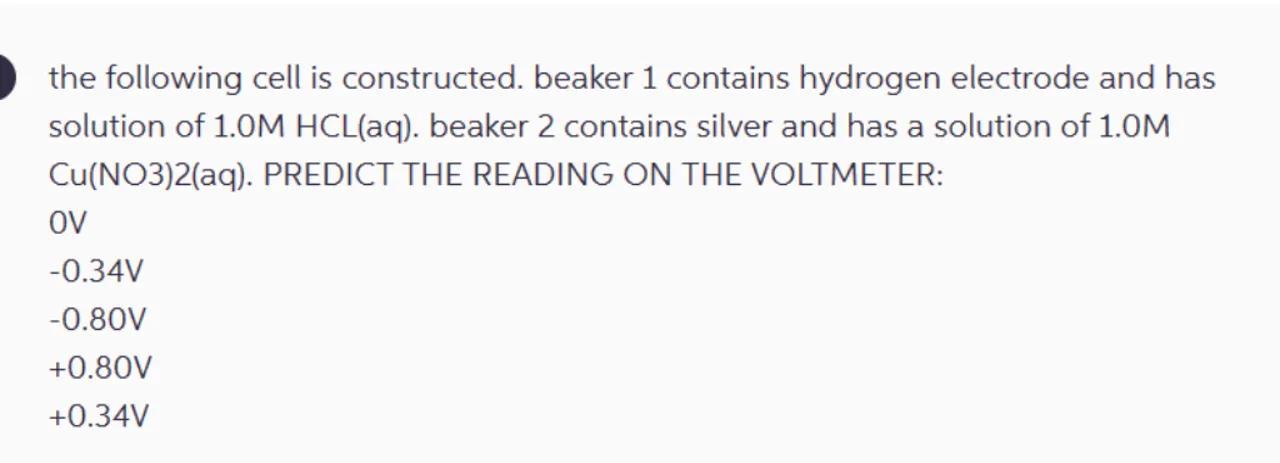
Sia
the following cell is constructed. beaker 1 contains hydrogen electrode and has solution of . beaker 2 contains silver and has a solution of . PREDICT THE READING ON THE VOLTMETER:
OV


Answer from Sia
Posted over 1 year ago
D
Key Concept
Standard Electrode Potentials
Explanation
The cell potential is calculated using the standard reduction potentials of the two half-cells. The standard hydrogen electrode (SHE) has a potential of 0 V, and the standard reduction potential for the Cu^2+/Cu half-cell is +0.34 V. Since the Cu^2+/Cu half-cell has a higher reduction potential, it will act as the cathode and the SHE will act as the anode. The cell potential is the difference between the cathode and anode potentials: E_cell = E_cathode - E_anode = +0.34 V - 0 V = +0.34 V.
Not the question you are looking for? Ask here!
Enter question by text
Enter question by image
Unlock Smarter Learning with AskSia Super!
Join Super, our all-in-one AI solution that can greatly improve your learning efficiency.
30% higher accuracy than GPT-4o
Entire learning journey support
The most student-friendly features
Study Other Question
